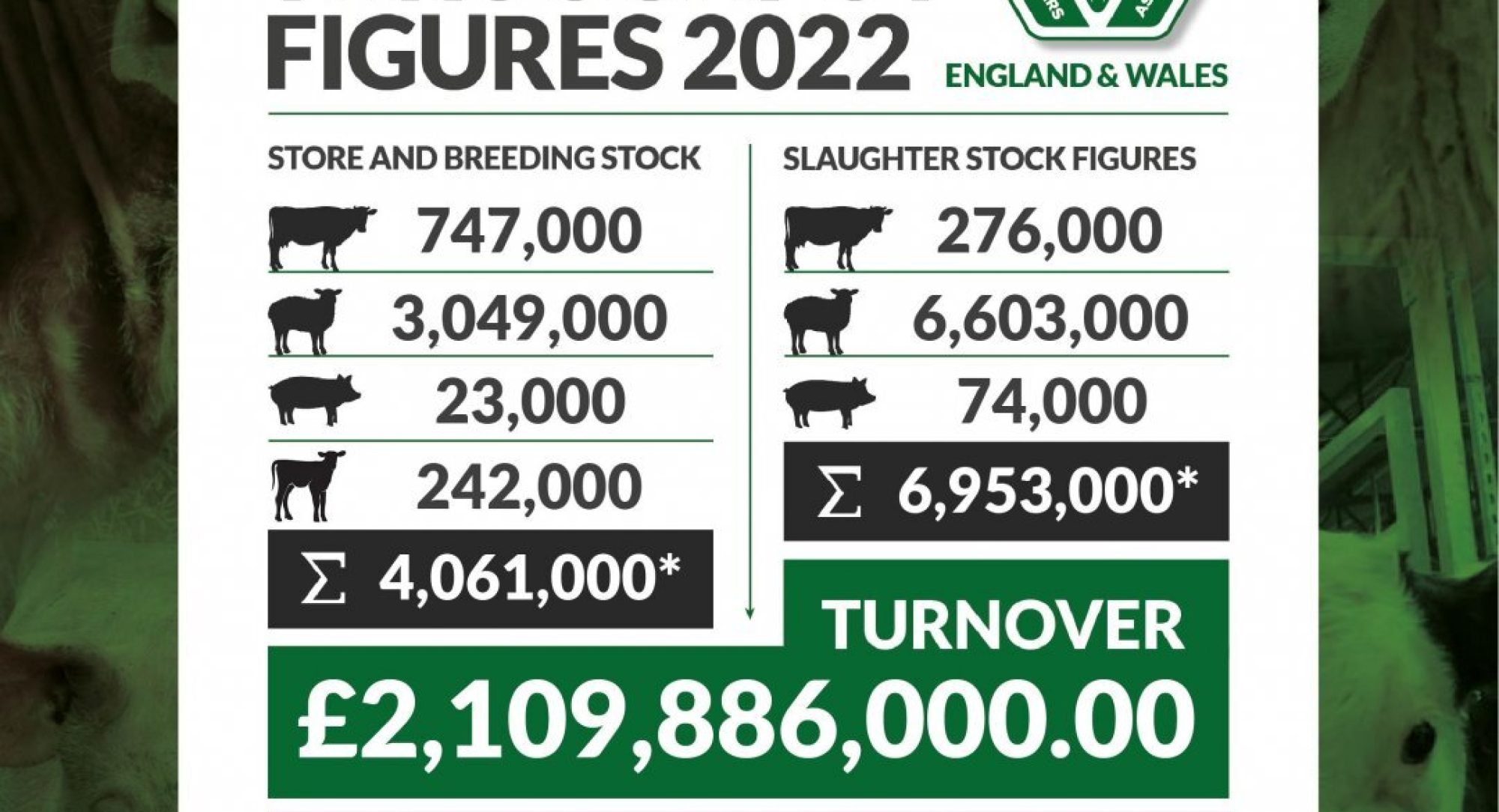Throughput figures indicate more farmers favouring the live sales ring over other market outlets
Latest throughput figures released this week by the Livestock Auctioneers’ Association (LAA) show that more farmers across England and Wales are favouring the live sales ring to secure the true value of their livestock, with margins under greater pressure from increased production costs.
Turnover across all classes through 2022 has again reached record figures, rising £27.5 million on the year to just over £2.1 billion. Significantly, with numbers remaining tight in various categories, these figures represent a dramatic rise in averages through the live sales ring.
“These turnover figures reflect not only the trend we have witnessed over recent years for producers returning to the live sales ring to market their stock, but also the fact that the auction system is placing those animals in front of multiple potential buyers,” says Chris Dodds, executive secretary of the Livestock Auctioneers’ Association (LAA).
Livestock markets provide an invaluable, competitive and transparent marketing outlet for producers, particularly noted during the challenges through the Covid-19 pandemic. Many marts reported vendors returning to the live sales system from direct supply chains over this period, while marts also welcomed new first-time customers.
In 2022 the livestock markets of England and Wales saw more than a quarter of a million more animals through their sale rings (254,000) than in 2019. Turnover in 2022 is more than half a billion pounds higher than in the corresponding pre-lockdown period in 2019, at a total increase just short of £556 million.
“These figures quantify the anecdotal evidence that vendors have not only been returning in numbers, but have also stayed with the marts, to get the true value for their livestock” adds Mr Dodds.
Total throughput figures of all classes of livestock through livestock markets (England and Wales)
- Cattle – 1,023,000
- Sheep – 9,652,000
- Pigs – 97,000
- Calves – 242,000
- TOTAL – 11,014,000
Over 11 million animals passed through the livestock markets, including over one million cattle and more than 9.5 million sheep. A significant rise in calf numbers, up 12,000 to a total of 242,000, is a response to the market’s ability to ensure the right buyers are around the ring for the right stock. Not only does the auction system provide a marketplace for all classes, but it also offers the potential to get more for the better-quality animal.
Trends set fair
The trends also seem set fair, as has been demonstrated in the first few months of 2023, evident in all categories. While the hogget trade has been boosted most recently by Easter and the Ramadan festival, the cull cow trade continues to thrive across both the beef and dairy cow sectors. Averages in 2022 rose more than £180 per cow over 2021 figures, to £1055.09.
Records have continued to be smashed across markets up into Spring 2023, as Sedgemoor Auction Centre auctioneer Robert Venner explains, “Looking at January and February alone this year, we saw a 5% increase on the year in barren cow numbers sold , at an increase of 27% in average value,” he says.
Store and prime cattle trade has also remained strong into 2023, providing vendors with the incentive to take advantage of the competitive nature of the live sales ring.
Bradley Towell, managing director at Frome Livestock Market says, “The returns being achieved in auction marts across the country make it extremely difficult to value store cattle on the farm without introducing competition.
“There is also the added benefit in an auction of having different customers for different weights and grades of cattle, which means individual buyers will bid more for what they want.
“Trade for prime beef is the highest it has ever been which is evident by the returns achieved in livestock marts here and across the country,” he adds.
Delivering the healthy competition to drive the trade, with buyers for all classes of livestock, the auction mart system is uniquely positioned to help vendors achieve a fair price for their stock, alongside providing access to advice and guidance on market demands.
